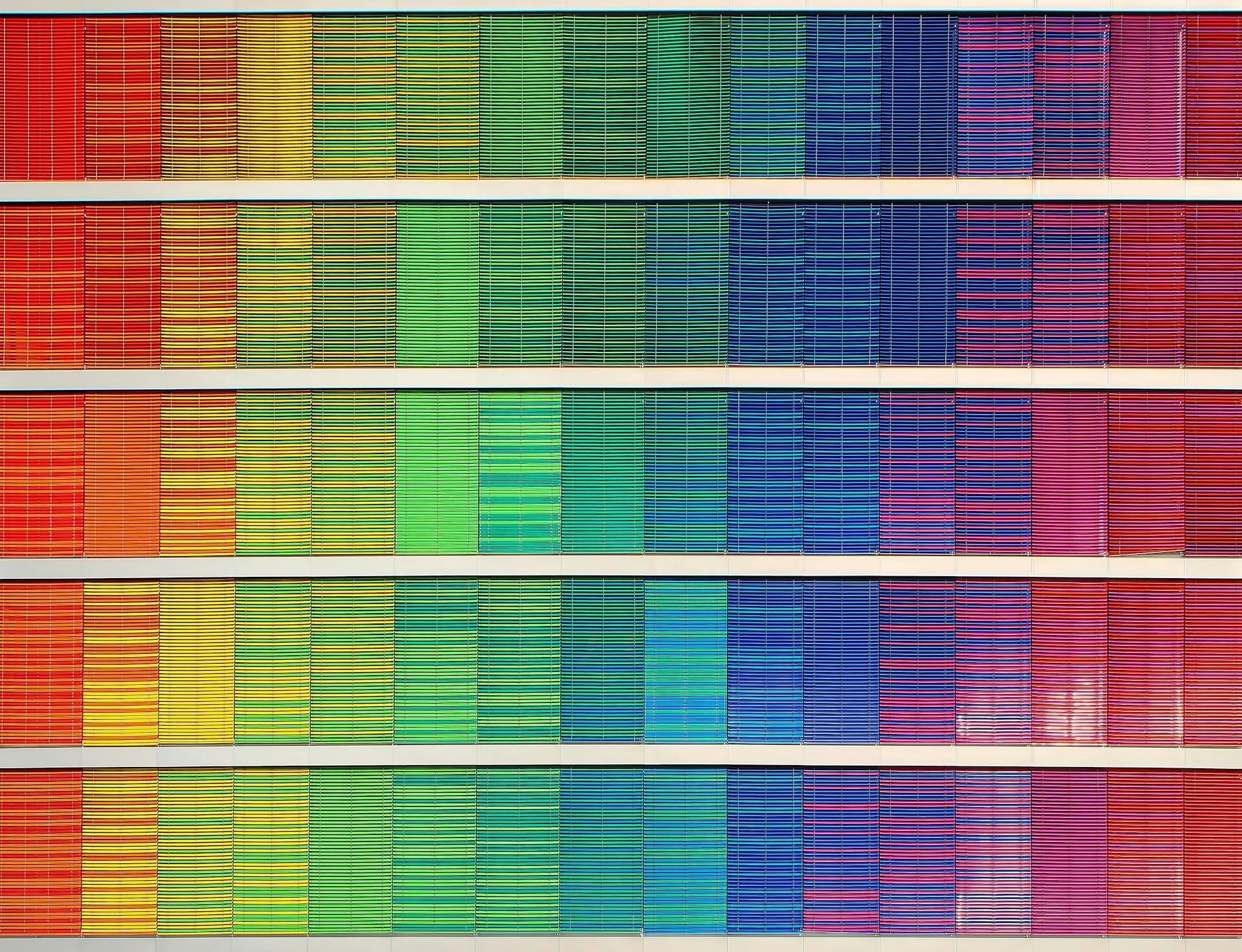Colors in French: Vocabulary & Cultural References
1. Basic Color Vocabulary

Start by mastering the most common colors:
- Rouge (red), Bleu (blue), Jaune (yellow), Vert (green)
-
Orange (orange) Rose (pink), Violet (purple), Noir (black)
- Blanc (white), Gris (gray), Marron (brown), Beige (beige)
These form the foundation for everyday use.
2. Gender & Number Agreement
Color adjectives in French usually agree with the noun they modify:
- Masculine singular: un livre vert
- Feminine singular: une voiture verte
- Masculine plural: des livres verts
- Feminine plural: des voitures vertes
Exceptions (invariable colors):
-
Orange, marron, and other color names derived from nouns remain unchanged, even plural:
des robes orange, des pantalons marron
3. Describing Shades
To describe tones, add modifiers that are always placed after the color adjective:
- Clair / claire = light (e.g., bleu clair, vert clair)
- Foncé / foncée = dark (e.g., rouge foncé)
- Vif / vive = bright; Pastel, Fluo = fluorescent etc.
These modifiers are invariable and do not change form with gender/number.
4. Advanced Shades & Nuanced Terms
French offers a rich palette of color variants:
-
Vert menthe (mint), bleu ciel (sky blue), lavande (lavender), émeraude
(emerald), safran (saffron)
These compound adjectives (e.g., vert menthe, bleu foncé) are invariable:
des feuilles vert menthe, des rideaux bleu foncé
5. Grammar Exceptions
-
Some colors like rosé, pourpre, mauve, vermeil behave as regular
adjectives and do change:
des robes mauves, des nappes vermeilles
- Color nouns (le rouge, le vert) remain masculine. La couleur is feminine.
6. Colors in Everyday French & Idioms
Colors appear in many French expressions that offer cultural insights:
- Voir rouge – to see red (get really angry)
- Être vert de jalousie – to be green with jealousy
- Avoir une peur bleue – to be extremely afraid
- La vie en rose – seeing life through rose-colored glasses
- Faire une nuit blanche – to pull an all-nighter
These idioms enrich your language and help you sound more like a native speaker.
7. Learning Tips
Here are fun, effective ways to master colors:
- Flashcards & Games: Color-matching apps, memory games, or “chatterbox” crafts to boost recall
-
Associate with objects: Link colors to familiar items: le ciel est bleu, le chocolat est marron
-
Sing songs: Listen to “La Chanson des Couleurs” or Ilona’s Un Monde Parfait to learn pronunciation through melody
-
Label your surroundings: Stick color labels on your clothing, kitchenware, and furniture to practice daily.
-
Use in sentences: Practice by saying or writing descriptive sentences: Mon sac est beige, Son pull est rouge
foncé.
Sample Sentences to Practice
- Le chat noir dort sur le canapé bleu clair.
- J’aime les fleurs violettes et orange.
- Elle porte une robe rose pastel ce soir.
- Nous avons des murs gris foncé dans la nouvelle salle.
- Ils ont acheté une voiture marron.
8. Conclusion
Colors are more than visual descriptors, they’re building blocks of everyday expression in French. By learning vocabulary, grammar rules,
idiomatic phrases, and engaging methods, you’ll gain both linguistic confidence and cultural fluency.
Start simple: pick five colors to practice today, use them in sentences and through objects around you. Gradually challenge yourself with
shades and idioms, and before you know it, you’ll be painting your conversations with color like a native.
Bonne chance et amusez-vous avec les couleurs !

Leave a Comment